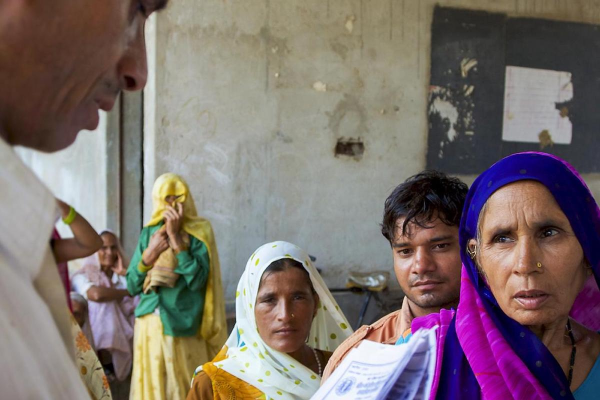Here’s how we can – realistically – achieve SDG target 3.4
Today, almost halfway into the 15-year marathon to achieve the Sustainable Development Goals (SDGs) by 2030, it’s safe to say that most countries are off track to achieving the SDG target 3.4 - to reduce premature mortality from non-communicable diseases (NCDs) by a third. COVID-19 has only made things worse, thanks to the resulting severe disruption of essential NCD services and care across the globe. Some key lessons have been learnt, nevertheless, and we now realize how the siloed approach to tackling health issues is far from optimal. The deadly interface between communicable and noncommunicable diseases witnessed during the pandemic calls for applying a Universal Health Coverage (UHC) lens to all efforts aimed at rebuilding resilient health systems. Given the magnitude of the impact of NCDs on population health and wellbeing, as well as their economic implications, achieving multiple SDG targets by 2030 will be impossible if we don’t act on NCDs today.
New numbers, new hope
The late and well-respected public health figure, Paul Farmer, had always opposed the concept of cost effectiveness, and in many ways, he was right. Access to quality, timely, and affordable healthcare is a human right and should be central in government budget planning, not to be availed only when a good return on investment (ROI) is proven. However, demonstrating cost effectiveness and good return on investment makes a compelling case for decision-makers, especially those outside of the health sector.
While it is largely believed that tackling NCDs is too expensive and that it isn’t possible in countries with very limited resources, a Lancet health policy paper released on March 26 demonstrates that with investments in a package of 21 highly cost-effective NCD interventions, which are aligned with the WHO Best Buys, nearly all countries – including low- and middle-income countries (LMICs) – could achieve the SDG 3.4 target by 2030. Implementing this package would require, on average, an additional US$18 billion annually over 2023–30. This investment could save 39 million lives and generate an average net economic benefit of $2.7 trillion. Again, this means that an additional investment of approximately US$140 billion would yield US$2.7 trillion in economic return… a whopping 19:1 ROI.
How it works
This intervention package, which includes 15 clinical interventions and six intersectoral policy interventions, is intended to be locally tailored to form the backbone of national NCD strategies in LMICs. While the clinical interventions would vary across countries and regions based on context, needs, and capacity, the intersectoral policy interventions (aka fiscal measures) would be relevant and necessary in every country, accounting for nearly two-thirds of the health gains.
On average, the total cost of implementing these locally tailored packages would require approximately 20% of government health budgets by 2030. With NCDs being the leading cause of death and disability, such allocation in national health spending is well worth it. However, while this is achievable for middle-income countries, not all low- and lower-middle-income countries will be able to afford financing these packages with domestic resources alone and would need to mobilize additional resources. This is where a catalytic funding mechanism such as the UN Multi-Partner Trust Fund would be instrumental.
Optimizing efficiency
For countries to meet the 20% expenditure target, improving public financial management capacity is key, both in terms of protecting the current funding and in securing new avenues of revenue. The value of health services integration has never been more relevant. Expanding primary health care (PHC) capacity to cover NCDs should be prioritized in countries with limited financial resources.
This NCD Countdown 2030 paper fully recognizes the reality that the future of global health is dominated by NCDs; reiterates the urgency and benefit of investing today to change this epidemiological trajectory; and calls for positioning the NCD agenda as an integral part of the sustainable development agenda. With these new figures and menu of cost-effective intervention options, the time to act is now. The clock is ticking on reaching the SDGs, and stakeholders can now make more informed decisions, adopt more evidence-based strategies, and take more solid steps towards achieving the global NCD targets.
Six intersectoral and 15 clinical interventions for reducing mortality from NCDs
Intervention |
Cause group |
|---|---|
Intersectoral policy interventions |
|
|
Alcohol excise taxes |
All |
|
Alcohol regulations |
All |
|
Tobacco excise taxes |
All |
|
Smoking regulations and information, education, and communication |
All |
|
Sodium reduction measures |
Ischaemic heart disease, ischaemic stroke, haemorrhagic stroke, all other cardiovascular diseases |
|
Trans fat bans |
Ischaemic heart disease |
Clinical interventions |
|
Community platform |
|
|
Pulmonary rehabilitation |
Chronic respiratory diseases |
Health centre platform |
|
|
Primary prevention for cardiovascular disease |
Ischaemic heart disease, ischaemic stroke, haemorrhagic stroke, all other cardiovascular diseases |
|
Secondary prevention for cardiovascular disease |
Ischaemic heart disease, ischaemic stroke, all other cardiovascular diseases |
|
Aspirin for suspected acute coronary syndrome |
Ischaemic heart disease |
|
Chronic treatment for heart failure |
Ischaemic heart disease, all other cardiovascular diseases |
|
Chronic treatment for asthma and COPD |
Chronic respiratory diseases |
|
Diabetes screening and treatment |
Diabetes |
First-level hospital platform |
|
|
Medical management of acute coronary syndrome |
Ischaemic heart disease |
|
Acute treatment for heart failure |
Ischaemic heart disease, all other cardiovascular diseases |
|
Early-stage cervical cancer screening and treatment |
Cervix uteri cancer |
|
Acute treatment for asthma and COPD |
Chronic respiratory diseases |
Referral and specialised hospital platform |
|
|
Percutaneous coronary intervention for acute coronary syndrome |
Ischaemic heart disease |
|
Management of acute ventilatory failure |
Chronic respiratory diseases |
|
Treatment of early-stage breast cancer |
Breast cancer |
|
Treatment of early-stage colorectal cancer |
Colon cancer and rectum cancer |
About the author

Hany Helmy joined the NCD Alliance’s New York office as Policy and Advocacy Manager, leading NCDA's advocacy work with United Nations agencies and member state missions as well as international financial institutions to advance financing priorities for NCDs. Hany is an experienced international development, humanitarian, and global health practitioner with considerable experience in the MENA and Africa regions. Hany holds a Doctor of Medicine (MD) degree from Alexandria University and a Master of Public Health (MPH) degree from the University of Toledo.
Connect with Hany
This blog has also been published on ncdalliance.org.






